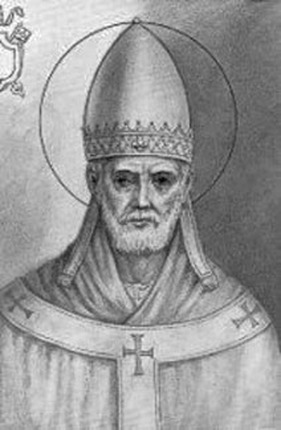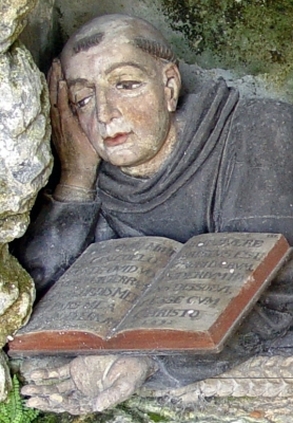Bloody Battle For Roman Papacy
By James Donahue
For a brief time, in about the year 366-367, there were two “Popes” in place over the Church of Rome. This stirred a short time of bloody conflict until Pope Damasus I became the victor and Pope Ursicinus was driven from his position.
This was a complex and confusing time for the early church, which some historians say had yet to even adopt the name Christian. The founders were following the teachings of the alleged Apostle Paul who were calling their belief “Paulinism.”
Adding to the confusion was that Roman Emperor Constantine adopted the new cult as his own and ordered construction of a large cathedral in the City of Constantinople to serve as the Holy See. Constantinople was dedicated as the capital of the Christian Empire. Thus there were two major cathedrals in existence in the year 366, both in competition to be the heart of the church.
Constantine served as the Roman Emperor until the year 337 AD. He was succeeded by his two sons, and then Julius and Jovian before Valentinian I came to power in 364.
The death of Pope Liberius in September 366 launched the fight between the two potential successors. As can be expected, there were then and remain today a lot of politics involved in naming the Popes of Rome. In those days the new bishops were elected by the clergy of the diocese. And in this case, the clergy was split into two groups.
Ursinus and Damasus were elected simultaneously. Damasus, who had the support of the upper-class partisans, hired a gang of thugs who stormed the basilica and for three days massacred the Ursinians. The bloodbath continued then as the supporters of Damasus went through the city and its suburbs, slaughtering anyone that dared to question Damasus as the official Pope.
Ursinus was banished to Gaul. There he built a small army of followers and staged a brief return to Rome. There was another war in the streets, Damasus won again, and Ursinus was exiled once more. This time for good.
Finally at a synod held in 378, Ursinus was officially condemned and declared an anti-pope. Damasus was exonerated and declared the true Pope.
His enemies accused Damasus of both murder and adultery during his years as the Pope. All of his bishops signed a warrant in 383 accusing Damasus of satanic crimes. It was such a serious case that Damasus went on Imperial Trial before Emperor Gratian. He was cleared of the charges and then had all of the participating bishops killed.
Damasus lived until he was about 80, so he remained the Pope of the Roman church long enough to have left his mark.
Damasus I was active in defending the Catholic Church against the threat of schisms. In two Roman synods (368 and 369) he condemned Apollinarianism and Macedonianism, and sent legates to the First Council of Constantinople that was convoked in 381 to address these heresies.
He appointed St. Jerome to serve as his confidential secretary and the two worked to end divisions with the church and church doctrine. They ended the marked divergences in the western texts of the time, revising the Greek language of the church to Latin.
Damasus also restored the catacombs and the graves of the martyrs and ancient relics that were stored there, even his his time.
During the Damasus papacy, Emperor Gratian came to power in Rome. Gration prohibited pagan worship at Rome, refused to wear the insignia of the pontifex maximus that would proclaim himself a member of the Pauline sect and confiscated the revenues of the temple.
The Gratian reign was short-lived and Damasus lived to see Theodosius I become the emperor. Theodosius proclaimed the doctrine taught by Saint Peter as the true religion of the Roman State and all was well again.
While not yet officially known as a Christian church, the Pauline Temple in Rome was gaining influence and power throughout Europe and the Middle East. Many historians consider Damasus to be the first real "Pope" representing the church in Rome.
He had to crack a few heads to gain that position.
By James Donahue
For a brief time, in about the year 366-367, there were two “Popes” in place over the Church of Rome. This stirred a short time of bloody conflict until Pope Damasus I became the victor and Pope Ursicinus was driven from his position.
This was a complex and confusing time for the early church, which some historians say had yet to even adopt the name Christian. The founders were following the teachings of the alleged Apostle Paul who were calling their belief “Paulinism.”
Adding to the confusion was that Roman Emperor Constantine adopted the new cult as his own and ordered construction of a large cathedral in the City of Constantinople to serve as the Holy See. Constantinople was dedicated as the capital of the Christian Empire. Thus there were two major cathedrals in existence in the year 366, both in competition to be the heart of the church.
Constantine served as the Roman Emperor until the year 337 AD. He was succeeded by his two sons, and then Julius and Jovian before Valentinian I came to power in 364.
The death of Pope Liberius in September 366 launched the fight between the two potential successors. As can be expected, there were then and remain today a lot of politics involved in naming the Popes of Rome. In those days the new bishops were elected by the clergy of the diocese. And in this case, the clergy was split into two groups.
Ursinus and Damasus were elected simultaneously. Damasus, who had the support of the upper-class partisans, hired a gang of thugs who stormed the basilica and for three days massacred the Ursinians. The bloodbath continued then as the supporters of Damasus went through the city and its suburbs, slaughtering anyone that dared to question Damasus as the official Pope.
Ursinus was banished to Gaul. There he built a small army of followers and staged a brief return to Rome. There was another war in the streets, Damasus won again, and Ursinus was exiled once more. This time for good.
Finally at a synod held in 378, Ursinus was officially condemned and declared an anti-pope. Damasus was exonerated and declared the true Pope.
His enemies accused Damasus of both murder and adultery during his years as the Pope. All of his bishops signed a warrant in 383 accusing Damasus of satanic crimes. It was such a serious case that Damasus went on Imperial Trial before Emperor Gratian. He was cleared of the charges and then had all of the participating bishops killed.
Damasus lived until he was about 80, so he remained the Pope of the Roman church long enough to have left his mark.
Damasus I was active in defending the Catholic Church against the threat of schisms. In two Roman synods (368 and 369) he condemned Apollinarianism and Macedonianism, and sent legates to the First Council of Constantinople that was convoked in 381 to address these heresies.
He appointed St. Jerome to serve as his confidential secretary and the two worked to end divisions with the church and church doctrine. They ended the marked divergences in the western texts of the time, revising the Greek language of the church to Latin.
Damasus also restored the catacombs and the graves of the martyrs and ancient relics that were stored there, even his his time.
During the Damasus papacy, Emperor Gratian came to power in Rome. Gration prohibited pagan worship at Rome, refused to wear the insignia of the pontifex maximus that would proclaim himself a member of the Pauline sect and confiscated the revenues of the temple.
The Gratian reign was short-lived and Damasus lived to see Theodosius I become the emperor. Theodosius proclaimed the doctrine taught by Saint Peter as the true religion of the Roman State and all was well again.
While not yet officially known as a Christian church, the Pauline Temple in Rome was gaining influence and power throughout Europe and the Middle East. Many historians consider Damasus to be the first real "Pope" representing the church in Rome.
He had to crack a few heads to gain that position.

